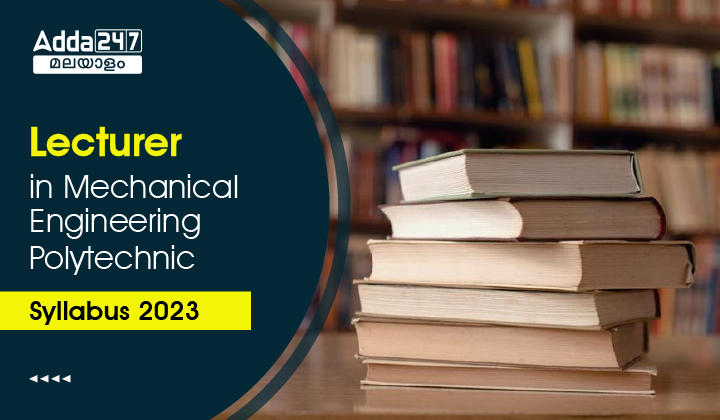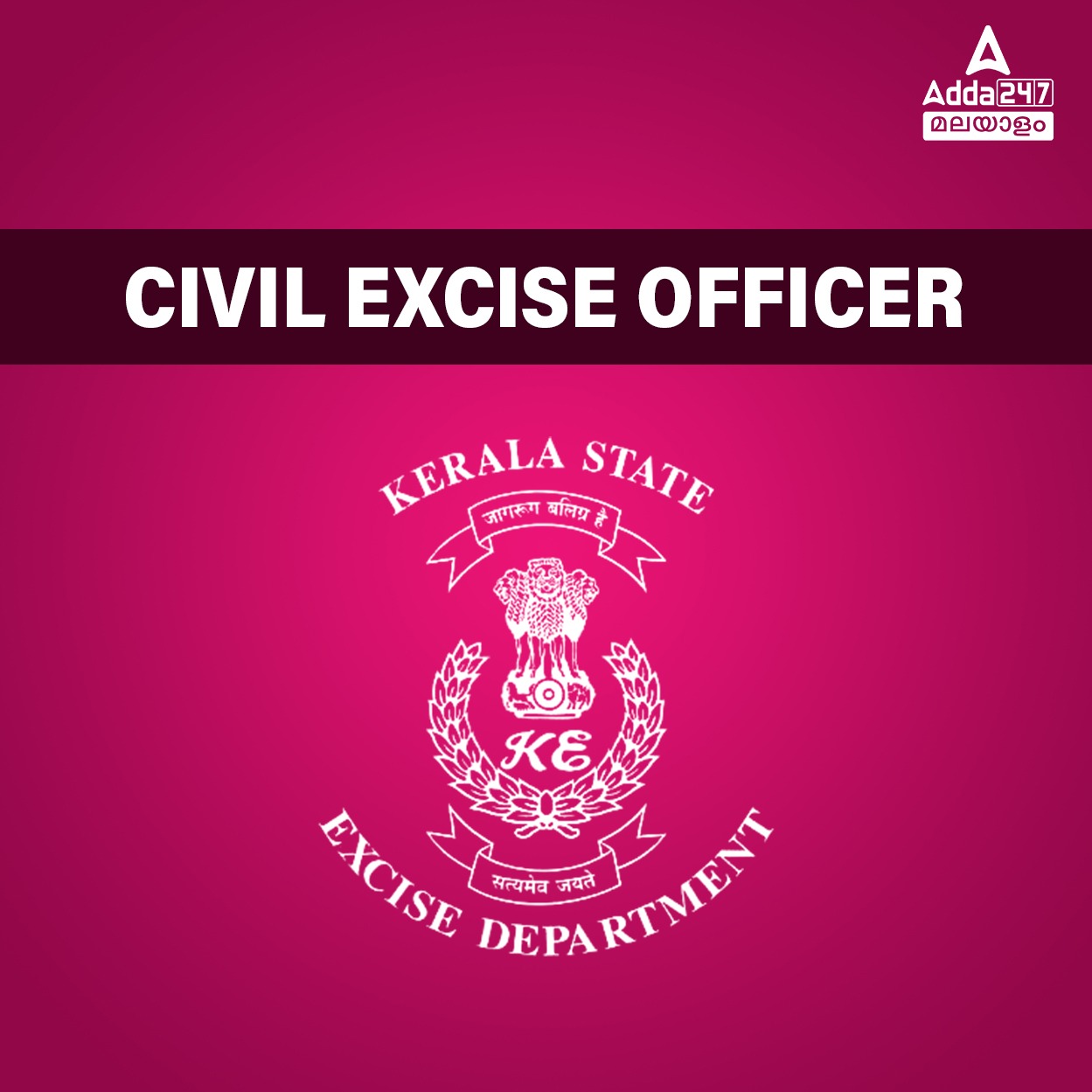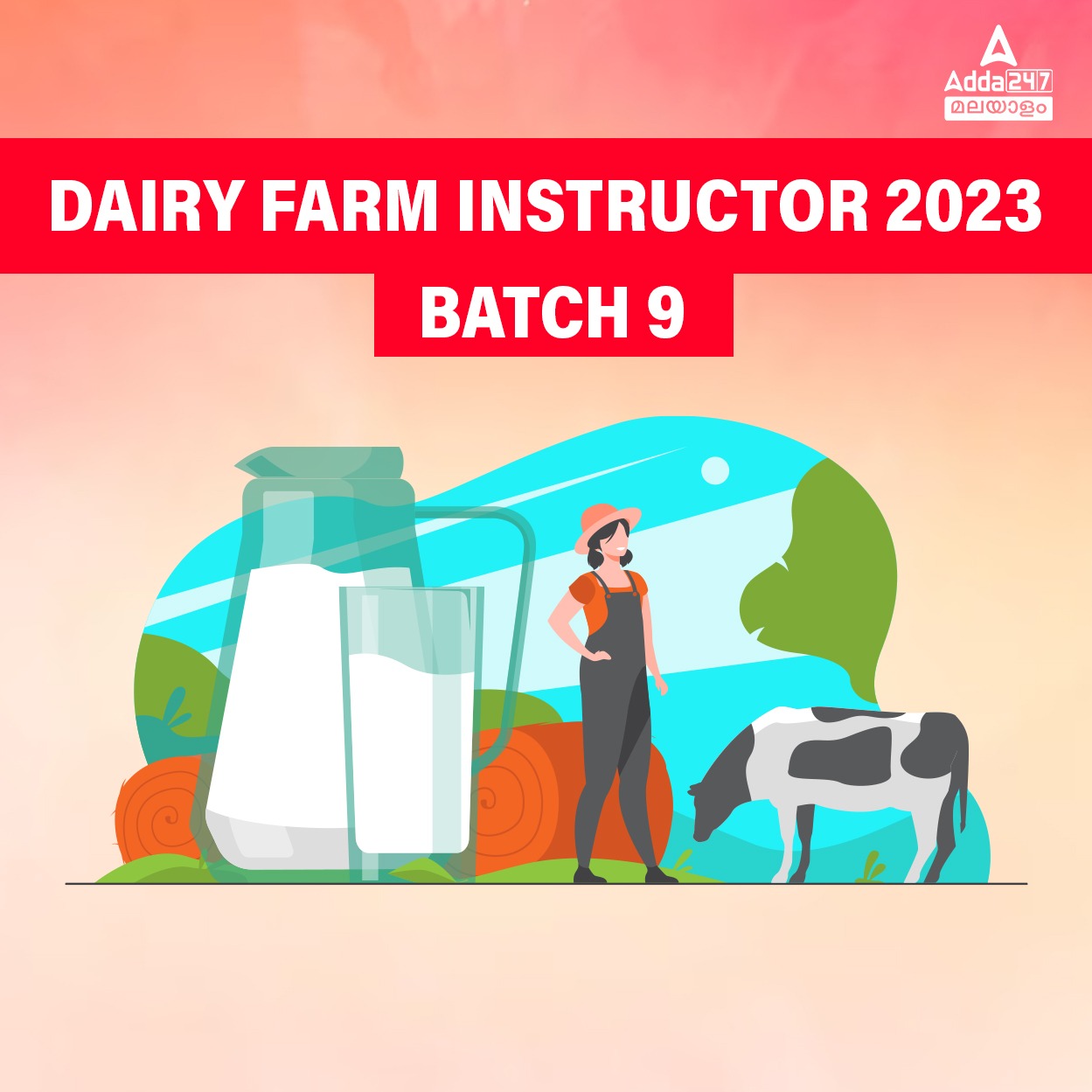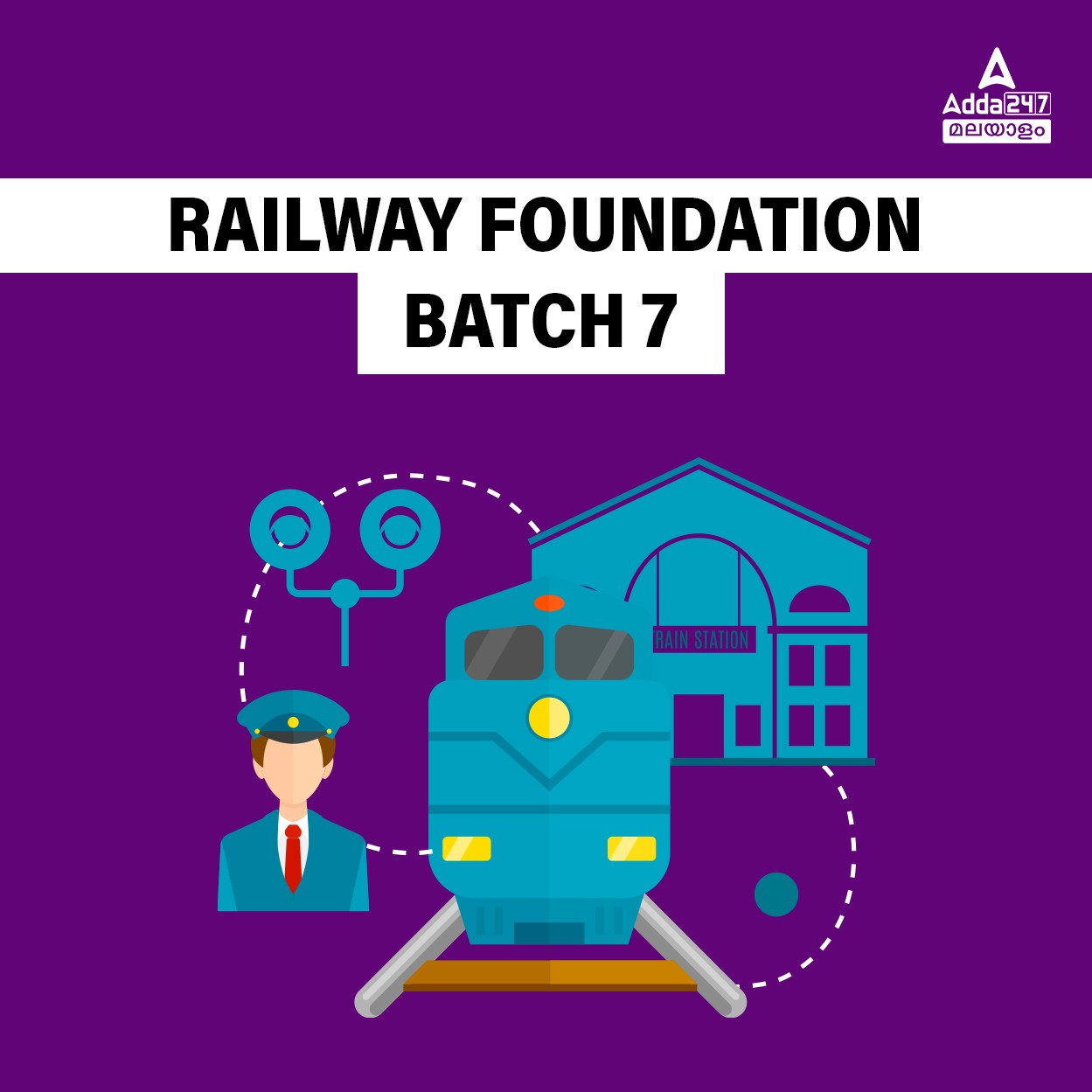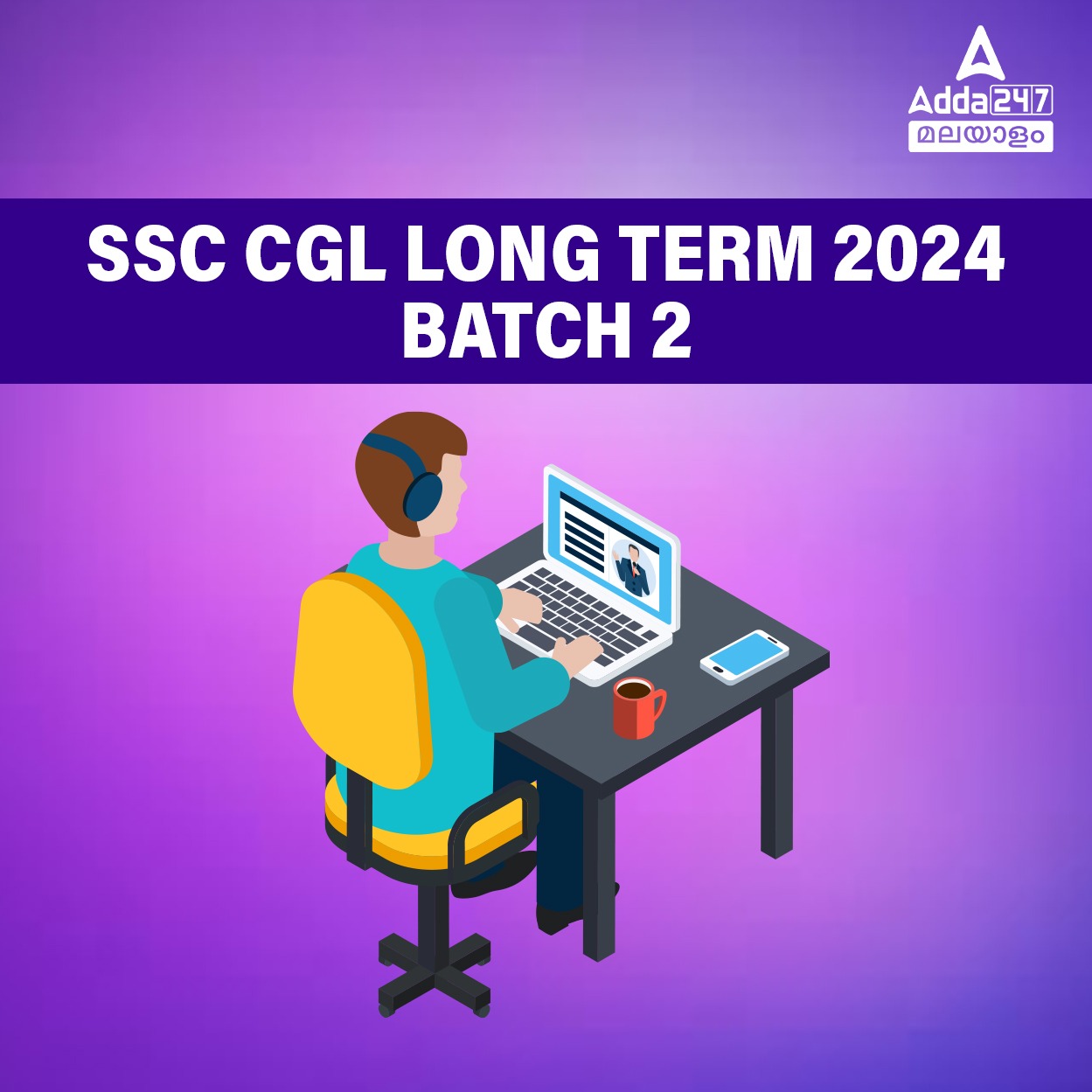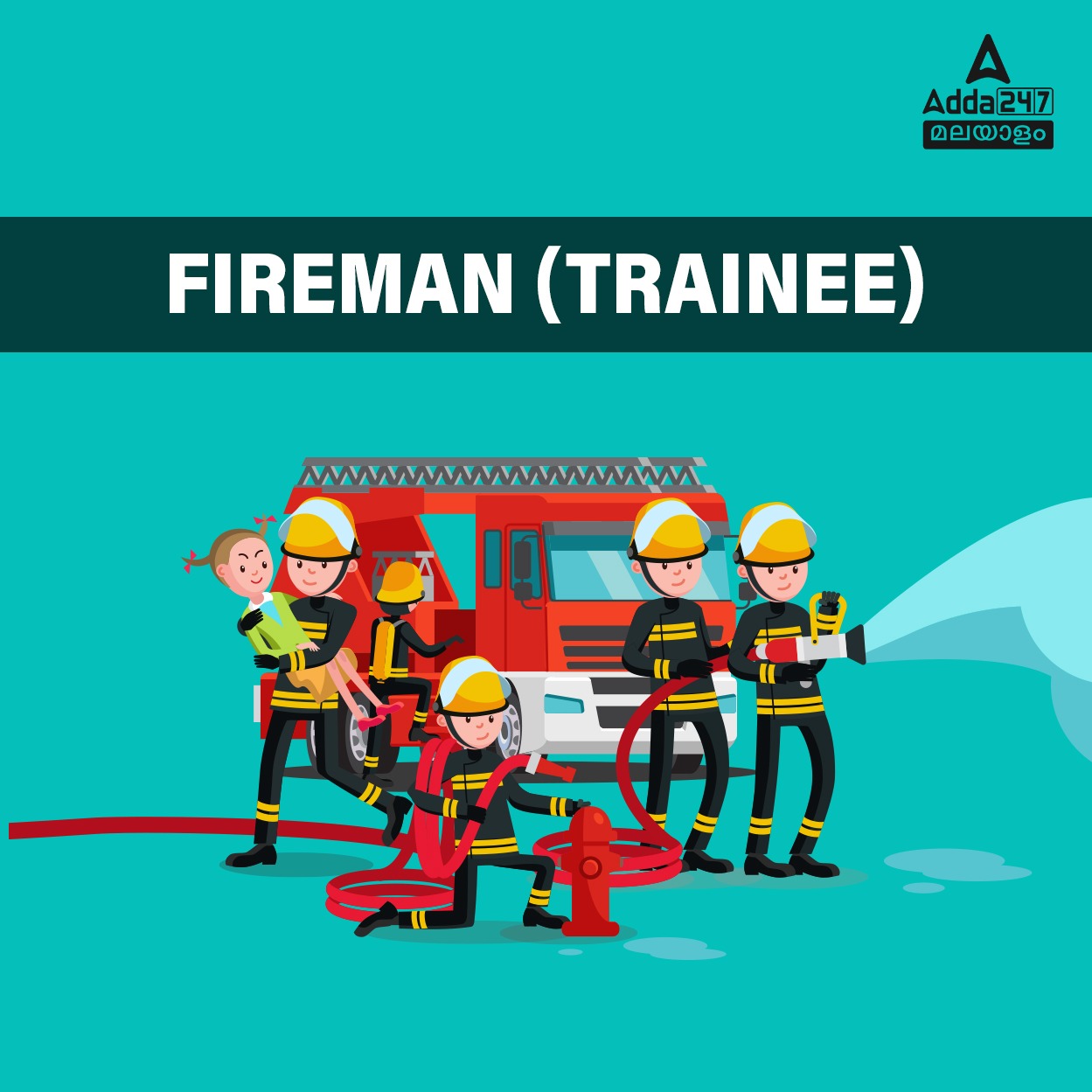Table of Contents
Lecturer in Mechanical Engineering Polytechnic Syllabus: Kerala Public Service Commission has published Lecturer in Mechanical Engineering Polytechnic Syllabus on its official website. If you have applied for the post of Lecturer in Mechanical Engineering and would like to know the detailed syllabus, then your search ends right here. To crack the exam, one needs to have a clear understanding of the syllabus, therefore read through Lecturer in Mechanical Engineering Polytechnic Syllabus to broaden your perspective. You can also download Lecturer in Mechanical Engineering Polytechnic Syllabus in PDF format.
Lecturer in Mechanical Engineering Polytechnic Syllabus 2023
Lecturer in Mechanical Engineering Polytechnic Syllabus 2023: പരീക്ഷയ്ക്കുള്ള തയ്യാറെടുപ്പുകൾ ആരംഭിക്കാൻ സമയമായി. പരീക്ഷയിൽ വിജയിക്കുന്നതിന്, സിലബസിനെക്കുറിച്ച് വ്യക്തമായ ധാരണ ഉണ്ടായിരിക്കണം, അതിനാൽ ലക്ചറർ ഇൻ മെക്കാനിക്കൽ എഞ്ചിനീയറിംഗ് പോളിടെക്നിക് സിലബസ് വിശദമായി വായിച്ച് മനസിലാക്കുക. ചുവടെ നൽകിയിരിക്കുന്നു ലിങ്ക് ഉപയോഗിച്ച് നിങ്ങൾക്ക് Lecturer in Mechanical Engineering Polytechnic Kerala PSC Syllabus PDF രൂപത്തിൽ ഡൗൺലോഡ് ചെയ്യാവുന്നതാണ്.
Lecturer in Mechanical Engineering Polytechnic Kerala PSC Syllabus: Overview
ചുവടെ നൽകിയിരിക്കുന്ന പട്ടികയിൽ Lecturer in Mechanical Engineering Polytechnic Kerala PSC Syllabus സംബന്ധമായ എല്ലാ പ്രധാനപ്പെട്ട വിവരങ്ങളും ലഭിക്കും.
| Lecturer in Mechanical Engineering Polytechnic Kerala PSC Syllabus | |
| Organization | Kerala Public Service Commission |
| Category | Exam Syllabus |
| Department | Technical Education (Govt. Polytechnics)} |
| Name of the Post | Lecturer in Mechanical Engineering |
| Category No. | 065/2021 |
| Date to Submit Confirmation | 22nd April 2023 To 11th May 2023 |
| Mode of Examination | ONLINE/ OMR |
| Medium of Questions | English |
| Total Marks | 100 |
| Duration of Examination | 1 Hour 30 Minutes |
| Official Website | www.keralapsc.gov.in |
Polytechnic Lecturer Mechanical Engineering Exam Pattern
കേരള PSC ലക്ചറർ ഇൻ മെക്കാനിക്കൽ എഞ്ചിനീയറിംഗ് പരീക്ഷ പാറ്റേൺ ചുവടെ ചേർക്കുന്നു.
| Polytechnic Lecturer Mechanical Engineering Exam Pattern | ||
| Modules | Subjects | Marks |
| Module I | Basics of Engineering | 30 Marks |
| Module II | Industrial Management and Industrial Engineering | 14 Marks |
| Module III | Metallurgy and Machine Tools | 14 Marks |
| Module IV | Fluid Mechanics, Pneumatics, and Hydraulic Machines | 14 Marks |
| Module V | Applied Mechanics, Strength of Materials, and Design of Machine Elements | 14 Marks |
| Module VI | Thermal Engineering | 14 Marks |
Lecturer in Mechanical Engineering Polytechnic Syllabus PDF Download
Lecturer in Mechanical Engineering Polytechnic Syllabus PDF ഡൗൺലോഡ് ചെയ്യാൻ, താഴെ നൽകിയിരിക്കുന്ന ലിങ്കിൽ ക്ലിക്ക് ചെയ്യുക.
Lecturer in Mechanical Engineering Polytechnic Syllabus PDF Download
Kerala PSC Lecturer in Mechanical Engineering Polytechnic Syllabus
ലക്ചറർ ഇൻ മെക്കാനിക്കൽ എഞ്ചിനീയറിംഗ് തസ്തികയുടെ വിശദമായ സിലബസ് ചുവടെ ചേർക്കുന്നു.
Module I (a): Technical Mathematics (10 Marks)
I. Matrices – Identification of Matrices, matrix operations, adjoint and inverse.
II. Determinants – Evaluation of second and third order, minors and cofactors, solutions of simultaneous linear equation in three unknowns using Cramer’s rule.
III. Binomial Series – Expansions using Binomial theorem.
IV. Trigonometric functions – Signs of functions in each quadrant. Trigonometric values of angles, properties of trigonometric functions, applications of the identities sin (A ± B), cos (A ± B), and tan (A ± B).
V. Coordinate geometry – Equations to a straight line – slope-intercept form, intercept form, Angle between two lines, condition for two lines to be perpendicular, parallel.
VI. Differentiation – Limits and continuity, derivatives of functions, equation to tangents, and normals. Maxima and minima of functions of one variable.
VII. Integration of functions – Integration of different types of functions.
VIII. Applications of integration – Area bounded by a curve and X or Y axis, solutions of differential equations using the method of variable separable, solutions of linear differential equations of the first order.
Module I (b): Basic Civil Engineering (5 Marks)
Materials: Brick – varieties and strength, characteristics of the good brick. Cement – varieties, and grades of cement and its uses. Steel – types of steel for reinforcement bars, and steel structural sections. Aggregates – types & requirements of good aggregates. Concrete – grades of concrete as per IS code, water cement ratio. Workability, mixing, batching, compaction, and curing.
Construction: Parts of the building – foundation – types of foundations – spread footing, isolated footing, combined footing, Raft, pile, and well foundations. Masonry – types rubble masonry, brick masonry, English bond, and Flemish bond. (One brick wall).
Surveying: Chain surveying – principles, instruments, ranging, and chaining survey lines, fieldwork and field book, selection of survey stations, units of land area.
Leveling: Levelling instruments, different types, benchmark, reduced level of points, booking of field notes, reduction of levels by the height of collimation method (simple problem). Modern survey – instruments – Total station, Electronics theodolite, Distomat.
Module I (c): Basic Mechanical Engineering (5 Marks)
The importance of IC Engines: Definition, classification – two-stroke engines, four-stroke engines, working of two-stroke engines and four-stroke engines with the help of line sketches, comparison between two-stroke and four-stroke engines, comparison between petrol and diesel engines, the function of the flywheel, clutch, gearbox, propeller shaft and differential in power transmission, explain with sketch the working of differential, briefly explain the power transmission of 4 wheel vehicle with a line diagram.
The importance of Power Plants: Introduction, classification of power plants – working of hydroelectric power plant with schematic sketches – working of thermal (Steam and Diesel) power plant with schematic sketches – working of nuclear power plant with schematic sketches.
Module I (d): Basic Electrical Engineering (5 Marks)
Review with a discussion of electric current, potential difference, power, EMF, resistance and its laws, Ohms law and series parallel circuit, electromagnetism, and generation of AC and DC supply.
The idea of a Basic electrical circuit: Electrical supply and load and its functioning, division of voltage and current in a parallel and series circuit – simple problems, units of power and energy, solution of DC circuit with the calculation of energy consumption in an installation.
Circuit parameters: Resistance, Capacitance, and inductance. AC circuit with R, L, C. Simple solution of typical AC circuit with resistance, impedance, power, and power factor.
The electrical circuit of an installation: Earthing, lightning protection.
Module I (e): Essentials of Electronics Engineering (5 Marks)
Active and passive devices – review only. LED – working, applications, comparison of LED lighting and CFL lighting. Full wave rectifier – diagram and explanation, 5 V power supply – with a bridge rectifier and 7805. SMPS – block diagram and advantages. Integrated circuits. SMDs – advantages. Static electricity – precautions in handling electronic circuits.
Switches: ON / OFF, push to ON, push to OFF, push to ON / OFF, SPST, SPDT, DPDT. Working and application of limit switches, proximity switches, and relays.
Microcontrollers: Simple block diagram of 8-bit microcontrollers – application.
Mobile technology: CDMA and GSM. Compare – 2G and 3G technologies.
Inverter & UPS: Block diagram. Compare – inverter and UPS. Online and offline UPS – differentiate. Battery selection for UPS and inverter.
Ewaste: Health hazards of e-waste.
Module II: Industrial Management and Industrial Engineering (14 Marks)
INDUSTRIAL MANAGEMENT
Principles of Management: Meaning of management – Taylor’s scientific management, Functions of management – Different types of ownership – organizational structure.
The Principles of a Good Wage Payment System: Types of Wages – Nominal, real, living, fair and minimum wages – Incentives.
Quality Planning and its developments: Definitions of quality – dimensions of quality– TQM concept
Project Management Techniques: Introduction to network analysis – Commonly used terms in CPM and PERT – CPM – operation, earliest finish time (EFT), latest finish time (LFT), critical path, even slack, or float, dummy activity – construction and numbering of network diagram – Fulkerson’s rule – Simple problems on CPM (by AOA method only) – PERT – Comparison between CPM and PERT – Calculation of expected time – Event, activity, successor event, predecessor event, earliest expected time, latest allowable time, slack.
Quantitative techniques in Management: Methods – Linear programming – formulation of LPP – transportation problem – North West corner rule, Vogel’s approximation method – Simple problems – Game theory – two-persons zero-sum game – Maxi-min and mini-max principle – saddle point – simple problems.
Materials and Sales Management: Inventory management – definition and classification – purchase procedure – buying techniques – EOQ and ABC analysis. Stores management – introduction – store keeping functions – duties of storekeeper – store layout – Centralized and decentralized store – store records – indent forms – bin card – store ledger.
Sales – importance – functions of sales department – sales forecasting.
INDUSTRIAL ENGINEERING
Production Planning and Control: Concepts of the industry – Meaning of the term production and productivity – Methods of increasing productivity – types of production – Job production batch production, mass production, continuous production – Explanation of production planning control – Benefits and functions of PPC – pre-planning activities – Forecasting, plant location, product planning, design and development, material selection, process planning, determination of men, machines, material and tool requirements – Process planning – Choice of the machine in process planning – Break-even analysis – Process sheet – Process planning procedure – Routing – Scheduling – Dispatching – value engineering – Plant location and layout – Factors to be considered in locating industrial plants – plant layout – Types of layouts – Compare the advantages and disadvantages of each type – Plant maintenance – Types of maintenance.
Method Study: Work study – Advantages and application of work-study to increase productivity – Method study – Therbligs and their symbols – Process chart symbols –preparation of operation process chart, flow process chart, man-machine chart, right-hand left-hand chart, and SIMO chart – Flow diagram – Principles of motion economy – Rules concerning the human body, workplace layout, and material handling, tools, and equipment design – Objectives of work measurement – Procedure of stopwatch time study – standard time calculation – Production study – work sampling – steps in work sampling.
Inspection and Quality Control: Concept of quality and quality control – product control – concepts of inspection- Types of inspection – first piece inspection. Working inspection, sample inspection, operation inspection, key operation inspection, floor or patrolling inspection, centralized inspection – Advantages and limitations.
Fundamental Statistical Concepts: Explain the term variability in measurements – Explain the terms variable, attribute, frequency, frequency distribution, and frequency plot – Normal distribution curve – Tally sheet – Explanation of the terms mean, mode, median, and standard deviation – Calculation of mean, mode, median and standard deviation – Statistical quality control – Types of control charts – X, R, P, 100P, and C.
Project Analysis: Need and scope for project analysis – Explanation of the constituents elements of project analysis – Production cost – Market survey – Selling price – Capital investment – Return on investment – Elements of costing – Classification of costs – Depreciation – Types of depreciation – Obsolescence – Basic formula for calculation of machining times for the operation such as turning, drilling and shaping – simple problems.
Module III: Metallurgy and Machine Tools (14 Marks)
MATERIAL SCIENCE
Metals and alloys: Structure of materials – the structure of solids – Crystal structure – BCC, FCC, and HCP – Ferrous and nonferrous – Cast iron – white malleable, grey and nodular cast iron – Manufacturing of Pig iron – Blast Furnace – Manufacturing of Cast iron – Cupola Furnace – Types of steel – Manufacturing of steel – Bessemer process, LD process, open hearth and Electric furnace – Steel alloys – Nonferrous metals and alloys – Aluminium, Copper and its alloys – Crucible furnace.
Heat Treatment Processes: Cooling curve for pure iron – iron-carbon equilibrium diagram – TTT diagram – Micro constituents of steel – Heat treatment process, annealing, normalizing, hardening, tempering, mar tempering, austempering, case hardening (cyaniding, nitriding, and carburizing), age hardening – induction hardening – flame hardening – residual stress due to heat treatment.
Properties, testing, and inspection of materials: Mechanical properties such as strength, hardness, toughness, brittleness, creep, fatigue, stiffness, ductility, malleability, elasticity, and plasticity – Thermal properties such as specific heat, thermal conductivity, thermal resistance, and thermal diffusivity – Destructive testing – Tensile and compressive test – Hardness test – Impact test – Fatigue test – Creep test – Non-destructive testing – Radiographic – Ultrasonic testing – Inspection – spark test, magnetic particle, x-ray, and dye penetration tests.
MANUFACTURING PROCESS
Measuring Instruments, gauges, and comparators: Classification of measuring instruments – precision and non-precision instruments – Direct reading and indirect measuring instruments – Vernier caliper, micrometer (inside, outside) – classifications of gauges – plug, ring, snap, screw pitch gauge, feeler gauge, standard wire gauge and indicating gauges – comparators – Mechanical comparators, Electrical comparators, optical comparators, pneumatic comparators.
Welding, Soldering, and Brazing: Arc welding – the principle of arc welding – welding positions – Flat, horizontal, vertical, and overhead welding – welded joints – Butt, lap, corner, tee, edge, V-joints, U-joint – selection of welding electrodes – Electrode coatings – Functions of electrode coating – Gas welding – a type of flames – functions and operation of oxyacetylene cylinders, pressure regulators, welding torch, nozzle – explanation of submerged arc welding, tungsten inert gas (TIG) welding, metal inert gas (MIG) welding, Atomic hydrogen welding, and thermit welding – Defects in welding – causes, and remedies of the defects such as porosity, poor penetration, warping, undercut, distortion crack, poor appearances – soldering – brazing.
Foundry: Tools – rammer, trowel, slick, lifter, strike off the bar, bellow, sprue pin, mallet, gate cutter, swab, vent rod, draw spike, molding box – composition of molding sands – types of moulding sand – green sand, dry sand, parting sand, loom sand, facing sand and core sand – properties of molding sand such as porosity, plasticity, adhesiveness, cohesiveness, refractoriness. Types of patterns – single piece pattern, split pattern, match plate pattern, gated pattern, loose piece pattern, sweep pattern, – Pattern allowances – shrinkage allowance, draft allowance, machining allowance, distortion or camber allowance, rapping allowance.
Benchwork and fitting: Fitting operations like chipping, filing, scraping, grinding, sawing, marking, drilling, reaming, tapping, dyeing – tools used in fitting – vice (bench vice, pipe vice, hand vice), files – various types of files – specification of files – chisels, hammers, hack saw, scrapers, punches, surface plate, surface gauge, V-block, angle plate, try square, combination set, steel rule, calipers (outside and inside), divider, scriber, drills, reamer, tap and tap wrench, die and die stock, goggles.
MACHINE TOOLS
Metal Cutting: Orthogonal cutting and oblique cutting, chip formation, type of chips, cutting speed, feed, and depth of cut – Tool life – Machinability.
Lathe and Lathe Work: Type of lathe – Lathe parts, the function of each part – Lathe accessories – Work holding and tool holding devices – Speed, feed, and depth of cut – Operations – taper turning methods – Lathe specification.
Drilling Machines: Classification – Work holding devices – Types of drill bits – Tool holding devices – Operations.
Shaping Machines: General use of a shaper – Parts and their functions.
Slotting Machines: General use of a slotter – Slotter parts and their functions.
Planing Machines: General use of a planer – Planer parts and their functions.
Milling Machines: General use of milling machines – Parts of milling machines and their functions – types of milling machines – Cutter holding devices (a) arbors (b) Collets –
Milling operations – plain milling, key, and key ways, gang milling, T- slot milling – Milling methods (a) conventional milling (b) climb milling – Types of indexing.
Broaching Machines: General use of broaching machines – Parts and their functions,
Gear Manufacture: Method of making gears – Gear hobbling.
Jigs and Fixtures: Definition of jigs and fixtures.
Grinding: Abrasives – natural, artificial – Bonding materials – vitrified, silicate, shellac, rubber – kinds of abrasives, grain size, grade and structure, kind of bond material, functions of the grinding wheels – Grinding machines – Cylindrical grinders – center type and centerless type grinders.
Capstan and Turret Lathe: Construction and parts – tooling layout.
Automatic and Copying Machines: Automation – definition.
Flexible Manufacturing System: Flexible automation – flexible manufacturing cell – components of FMS.
Robots and Robotics: Basic elements of robots – types of joints – robotic arms – robotic hands.
Computer Numerical Control (CNC): Machine tools (brief description only)
Module IV: Fluid Mechanics, Pneumatics and Hydraulic Machines (14 Marks)
FLUID MECHANICS AND PNEUMATICS
Properties of Fluids: Density – specific weight – specific volume–specific gravity – problems – viscosity – kinematics viscosity – Newton’s law of viscosity – types of fluids – compressibility – surface tension – capillarity.
Fluid Pressure and its Measurement: Fluid pressure at a point – pressure head – problems – Pascal’s law – absolute, gauge, atmospheric, and vacuum pressures – simple problems – measurement of fluid pressure – Piezometer tube – simple manometer – differential manometer – inverted differential manometer – Bourdon’s tube pressure gauge – total pressure.
Kinematics and Dynamics of Fluid Flow: Introduction – types of fluid flow – steady and unsteady flow – uniform and non-uniform flow – laminar and turbulent flow – compressible and incompressible flow – rotational and irrotational flow – rate of flow or discharge – equation of continuity of liquid flow – simple problems – energy of a liquid in motion – potential energy – kinetic energy – pressure energy – total energy – total head of liquid in motion – Bernoulli’s equation – practical applications of Bernoulli’s equation – venturimeter – Orifice meter – Pitot tube.
Flow through Orifices, Notches, Pipes, and Nozzles: Orifices – types of orifices – Vena contracta – coefficient of contraction – coefficient of velocity – coefficient of discharge– Notches – types of notches – Flow through pipes – loss of head in pipes – major energy losses – -minor energy losses – loss of energy due to friction – Darcy’s formulae (No derivation) for loss of head in pipes – Chezy’s formula (No derivation) for loss of head in pipes – simple problems – loss of head due to sudden enlargement – loss of head due to sudden contraction (No derivation) – water hammer – nozzles.
Fluid Power: Introduction – Basic law – Applications of fluid power
Hydraulic System: Basic elements of the hydraulic system – oil reservoir pump unit – principles of working of positive displacement pump – classifications – Gear pumps, Screw pump, Vane pumps, Lobe pump, Simple piston pumps.
Hydraulic Control Elements and Components: Control valves – Functions – classifications – Describe the working of pressure control valves such as relief valves – Poppet valves – Direction control valves – check valves – Flow control valves – types – gate, globe, butterfly valves, nonreturn valve.
Pneumatic System: Comparison of a pneumatic system with a hydraulic system – identification of standard pneumatic symbols – basic pneumatic system – air filter – pressure regulator – lubricator – mufflers.
Pneumatic Control Elements and Components: Pneumatic control valves – Air cylinders.
HYDRAULIC MACHINES
Impact of Jets: Force exerted by the jet – stationary – vertical – inclined – curved plate (symmetrical and unsymmetrical) – force exerted by the jet on moving plates – simple problems.
Impulse Turbines: Development of water Turbines – classification – impulse Turbine – Pelton wheel components.
Reaction Turbines: Components – the difference between impulse & reaction – classification of Reaction Turbines – Francis Turbine – Kaplan Turbine – Draft tubes – specific speed.
Centrifugal Pump: Types of casing – a piping system of CP – work done, manometric head – efficiencies – discharge – power required to drive – multistage pumps – specific speed of CP – cavitation – priming.
Reciprocating Pump: Types – comparison of CP & RP – discharge – slip – air vessels, Hydraulic ram.
Module V: Applied Mechanics, Strength of Materials, and Design of Machine Elements (14 Marks)
APPLIED MECHANICS, STRENGTH OF MATERIALS
Direct Stresses and Strains: Types of Stresses and strains – tensile and compressive – longitudinal and lateral strain – Poisson’s ratio – the behavior of mild steel under tension – stress-strain diagram – limit of proportionality – elastic limit – yield point – ultimate stress – working stress – factor of safety – comparison of stress-strain diagram of mild steel and brittle material – Hooks law and Young’s modulus – the principle of superposition – stresses in varying section – stresses in composite section – simple problems.
Shear Stress and Shear Strain: Shear stress and strain – modulus of rigidity – volumetric strain, bulk modulus – simple problems.
Thermal Stress and Strain: Nature and magnitude of stresses due to change in temperature – total or partial prevention of expansion and contraction – temperature stress on the composite bar – simple problems.
Truss Analysis: Types of frames – formula for finding the redundancy – free body diagram– equilibrium – forces in various members of stress due to loading – method of joints and method of sections.
Friction: Introduction – a type of friction – static friction, dynamic friction, sliding friction, rolling friction, pivot friction, limiting friction, angle of friction, coefficient of friction, cone of friction – state laws of friction – static friction and kinetic friction.
Centre of Gravity of Sections: Centroids – the center of gravity – axis of symmetry and axis of reference – methods to find the center of gravity – simple geometric sections such as rectangles, triangles, and circles.
Moment of Inertia of Sections: Moment of inertia – radius of gyration.
Riveted Joints: Types – lap joint – single riveted, double riveted (Chain and zigzag) – butt joint single cover single riveted, double cover single riveted – failure of riveted joints – failure of rivets – shearing and crushing – failure of plates – tearing across a row of rivets – tearing off the plate at an edge – the strength of rivet, plate and riveted joint – efficiency of a riveted joint – caulking and Fullering operations.
Welded Joints: Welding terms – leg of the weld, size of the fillet weld, throat thickness, effective length of the weld, side fillet weld, and end fillet weld – strength of welded joints.
Thin Cylinders: Failures of the thin cylinder – stresses in the thin cylindrical shell – hoop stress – longitudinal stress.
Torsion of Circular Shafts: Torsion equation – strength equation for the solid and hollow shaft (no proof) – power equation – a polar moment of inertia.
Springs: Types of spring – leaf spring – helical springs.
Shear Force and Bending Moment: Types of beams – cantilever beam, simply supported beam, overhanging beam, built-in beam or fixed beam, and continuous beam – types of loading – concentrated or point load, uniformly distributed load, and uniformly varying load – shear force and bending moment diagrams – cantilever beams – point load, uniformly distributed load and combination of point load and uniformly distributed load – simply supported beam – point load, uniformly distributed load and combination of point
load and uniformly distributed load – maximum bending moment on the section. – deflection of beams.
Columns and Struts: Column, strut, buckling load, equivalent length, slenderness ratio – types of columns – short column, medium size column, long column.
MACHINE DRAWING AND DESIGN OF MACHINE ELEMENTS
Screw Threads: Thread terminology – Forms of screw threads (square thread, V thread) – Whitworth thread – British Association thread – American standard thread – Acme thread – ISO metric thread – square thread – single start and multi-start threads – right hand and left-hand threads – conventional representation of threads. Bolted connection using standard proportions.
Welded joints and Piping Layout: Classification of welds – Elementary welding symbols – types of pipes – Methods of connecting pipes – pipe threads – representation of pipe threads – types of pipe joints – single and double line orthographic symbols for pipe fittings and valves (flanged, screwed and welded joints).
Limits, Fits and Tolerances: Definition of limits, fits and tolerances.
Surface Roughness: Surface roughness terminology – surface roughness values, Grades, and symbols.
General Design Considerations: General procedure – Design stress and working stress – factor of safety – Kinematic link – pair – chain – four bar chain – examples and applications – mechanism – inversion.
Bolts, Nuts, and Key: Designation of screw threads – stresses in screwed fastenings due to static loading – initial stresses – stresses due to external forces – bolts of uniform strength – types of keys – forces acting on a sunk key – strength of a sunk key – calculation of key size using empirical proportions.
Shafts: Torsional stresses and strains – the strength of solid and hollow shafts – design of shaft considering strength and rigidity – comparisons – power transmitted by a shaft – compare solid and hollow shaft in terms of their weight, strength, and stiffness.
Couplings: Shaft couplings – requirement – types.
Bearings: Functions of bearings – classification of bearings – Radial bearings – thrust bearings – sliding contact bearings – rolling contact bearings.
Cams: Classification of followers and cams – motion of the followers – uniform velocity, simple harmonic motion – uniform acceleration and retardation – cam terminology – displacement diagrams.
Governors and Flywheels: Functions of the governors – types of governors – simple watt governor – porter governor – flywheels – comparison with governors – coefficient of fluctuation of speed – fluctuation of energy – maximum fluctuation of energy – coefficient of fluctuation of energy.
Belt Drives: Types of belts – flat belt, circular belt or rope, V-belt – types of flat belt drives – open and crossed belt drive – compound belt drive – stepped or cone pulley drive – velocity ratio – slip – creep.
Gears and Gear Trains: Functions of gears – friction wheels – advantages and disadvantages of a gear drive – spur gear nomenclature – simple gear drive – velocity ratio – gear trains – simple gear train – compound gear train.
Module VI: Thermal Engineering (14 Marks)
THERMAL ENGINEERING
Air Standard Cycles: Assumption, Air standard efficiency – explanation with diagrams and derivation of air standard efficiency of Carnot Cycle, Otto cycle, Diesel cycle, dual combustion cycle.
Fuels & Combustion: Classification of fuels – solid, liquid & gaseous – Merits & demerits of various types of fuels – requirements of a good fuel – Calorific Value – combustion of fuel.
Testing of I. C. Engines: Performance of I. C. Engines – testing – Indicated power, Brake power, Friction power – Mechanical efficiency – Indicated Thermal efficiency, Brake Thermal efficiency, Relative efficiency – Total fuel consumption & Specific Fuel Consumption – Morse test for determination of I. P. of the multi-cylinder engine – Heat balance sheet – problems.
Heat Transfer: Heat Transfer – conduction, convection, and radiation – Fourier’s law – Thermal conductivity – Conduction through plane wall and composite wall – Black body concept – Stefan-Boltzman law – Gray body concept – Newton Richman equation – free and forced convection.
Heat Exchangers: Heat exchangers – Classification – Recuperator type and regenerative type, parallel flow, counter flow type & cross flow – the concept of overall heat transfer coefficient – LMTD.
Air Compressors: Construction and working of Air compressors – a function of an air compressor – uses of compressed air – classification of the air compressors – working of reciprocating compressors (single stage and two stages), rotary compressors – fans and blowers, centrifugal compressors, and axial flow compressors. Mechanical efficiency & volumetric efficiency.
Different Systems of I. C. Engines: Fuel systems – components – carburetion – functions of carburetor – working fuel systems of diesel engine – fuel filter – injector and injection nozzle – ignition system – cooling system – classification of the cooling system – radiators – IC engine lubrication system – forced system – governing systems – quantity governing – quality governing – hit and miss governing.
Principles of Refrigeration: Definition of refrigeration, the concept of C. O. P., a unit of refrigeration – reversed Carnot cycle – COP, Application of refrigeration.
Vapour Compression Refrigeration Systems: Principles and working of a vapor compression system with the help of flow diagram. C.O.P. of vapor compression systems.
Refrigeration Equipment: Compressors – Condensers – Evaporators – Expansion Devices – capillary tube, Thermostatic expansion valve.
Refrigerants: Definition, primary and secondary refrigerants, desirable properties of refrigerants.
Psychrometry: Definition, Dry air, moist air, saturated, unsaturated, and supersaturated air, degree of saturation, dry bulb temperature, wet bulb temperature, dew point temperature.
Psychrometric Processes: Sensible heating, sensible cooling – humidifying, dehumidifying
Air Conditioning: Definition, factors affecting human comfort, effective temperature.
Air Conditioning Systems: Classification – industrial, comfort air conditioning, working of summer air conditioning, winter and year-round air conditioning.

